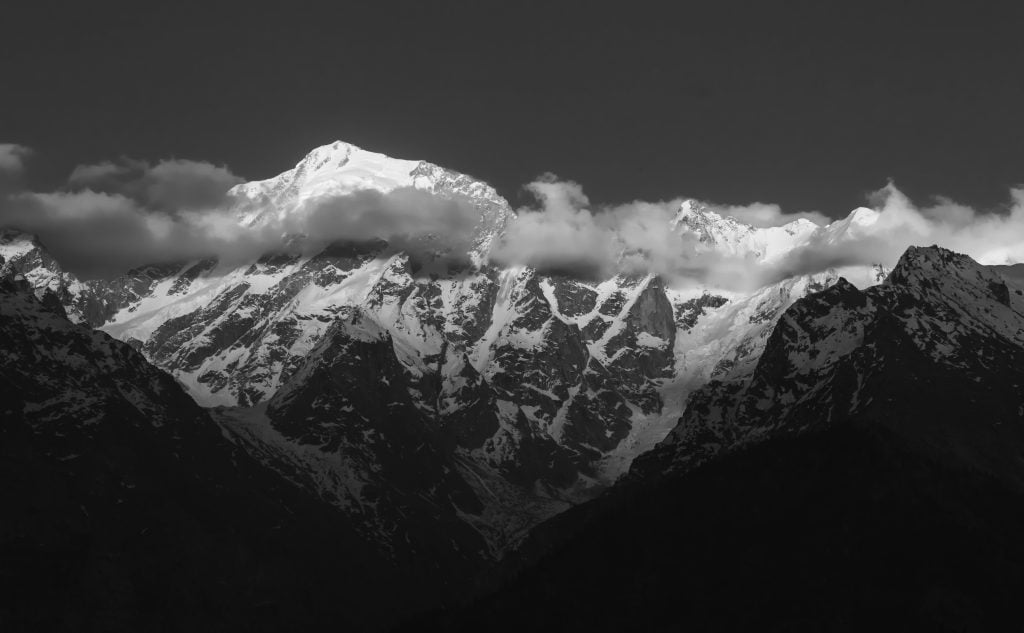Mount Kailash: The Sacred Peak of the World
In the midst of the mystical landscapes of Western Tibet, a sacred summit rises, touching the realms of faith and mysticism: Mount Kailash. This conical peak, soaring up to 6,638 meters, holds unique religious and cultural significance, being a revered site in Hinduism, Buddhism, Jainism, and Bon traditions. Known also as “Gang Rinpoche,” Kailash not only captivates with its awe-inspiring elevation and natural beauty but is also recognized as the abode of the Hindu deity Shiva. In this article, we delve into various facets of Mount Kailash, exploring its geographical location, religious importance, and the mystical rituals that revolve around this sacred mountain.
Where is Mount Kailash
Mount Kailash is located in the southwestern part of Tibet, an autonomous region within the People’s Republic of China. The exact coordinates are approximately 31.0672° N latitude and 81.3119° E longitude. The mountain is situated near the source of several major rivers in the region, including the Indus River, the Sutlej River, the Brahmaputra River, and the Karnali River. It is considered a sacred site by multiple religions, drawing pilgrims and visitors from around the world. The nearest notable town to Mount Kailash is Darchen.
How to Go to Mount Kailash ?
1. Entry into Tibet:
By Air:
The most common entry point is through Lhasa Gonggar Airport. You can fly to Lhasa from major cities in China, including Beijing, Shanghai, Chengdu, and others.
From Lhasa, you will need to arrange additional transportation to reach Mount Kailash.
By Train:
Alternatively, you can take the train to Lhasa from cities like Beijing, Chengdu, or Xining. The Qinghai-Tibet Railway offers a scenic journey to the Tibetan Plateau.
Once in Lhasa, you can hire a vehicle or join a tour to travel to Mount Kailash.
2. Travel to Mount Kailash:
By Road:
The overland route from Lhasa to Mount Kailash is a popular choice. The journey takes you through breathtaking landscapes, high mountain passes, and traditional Tibetan villages.
The town of Darchen, near Mount Kailash, is often the starting point for pilgrimages and treks.
Organized Tours:
Due to the remote location and travel restrictions in Tibet, many visitors opt for organized tours. These tours typically include transportation, permits, and guides.
Local travel agencies in Lhasa or Kathmandu (if traveling from Nepal) can help arrange tours to Mount Kailash.
3. Permits and Regulations:
Travel to Tibet involves obtaining permits, and there are specific permits required to visit Mount Kailash. These include the Tibet Travel Permit, Alien’s Travel Permit, and Military Permit.
It’s essential to check the latest regulations and obtain the necessary permits well in advance of your journey.
4. Altitude Considerations:
Mount Kailash is at a high altitude, and acclimatization is crucial to avoid altitude sickness. Plan your itinerary to allow for gradual acclimatization.
5. Nepal Route:
For those traveling from Nepal, there is an overland route from Kathmandu to Mount Kailash through the border at Zhangmu.
This route often includes a trek around Mount Kailash known as the Kailash Parikrama.
How Many Meters is The Height of Kailash ?
Mount Kailash has an elevation of approximately 6,638 meters (21,778 feet) above sea level. This makes it one of the highest peaks in the Kailash Range, which is part of the Transhimalaya in western Tibet, China. The mountain is renowned for its religious and cultural significance in Hinduism, Buddhism, Jainism, and Bon traditions, attracting pilgrims and trekkers from around the world.
What to do on this Mount Kailash ?
The activities you can engage in around Mount Kailash vary based on your interests, religious beliefs, and the duration of your visit. Here are some common activities and experiences associated with Mount Kailash:
Religious Pilgrimage:
Hinduism: For Hindus, circumambulating Mount Kailash (known as Kora or Parikrama) is a sacred ritual. The traditional route is a 52-kilometer trek around the base of the mountain.
Buddhism: Buddhists also perform the Kora around Mount Kailash as a part of their spiritual journey. There are several monasteries and sacred sites to explore along the way.
Trekking and Hiking:
Mount Kailash offers stunning trekking opportunities. Apart from the Kora, there are trekking routes leading to high vantage points with panoramic views of the surrounding landscapes.
Exploration of Sacred Sites:
Visit the ancient Chiu Monastery, which offers spectacular views of the Kailash Range.
Explore the Tarboche Flagpole, an essential starting point for the Kora, where pilgrims raise prayer flags.
Photography and Nature Appreciation:
Capture the breathtaking scenery of Mount Kailash, surrounded by pristine lakes, high-altitude plateaus, and unique geological formations.
Observe the wildlife and diverse flora that thrive in this high-altitude region.
Cultural Interaction:
Interact with local Tibetans and learn about their unique culture and traditions.
Attend local festivals or religious ceremonies if your visit coincides with such events.
Meditation and Reflection:
Many visitors find the serene environment around Mount Kailash conducive to meditation and self-reflection.
The tranquil surroundings and spiritual atmosphere make it an ideal place for those seeking inner peace.
Joining Organized Tours:
Many travelers opt for organized tours that include guides, transportation, and necessary permits. These tours often provide insights into the cultural and spiritual significance of the region.
Observing Rituals:
Witness or participate in religious rituals and ceremonies conducted by pilgrims.
Respect local customs and practices during your visit.





